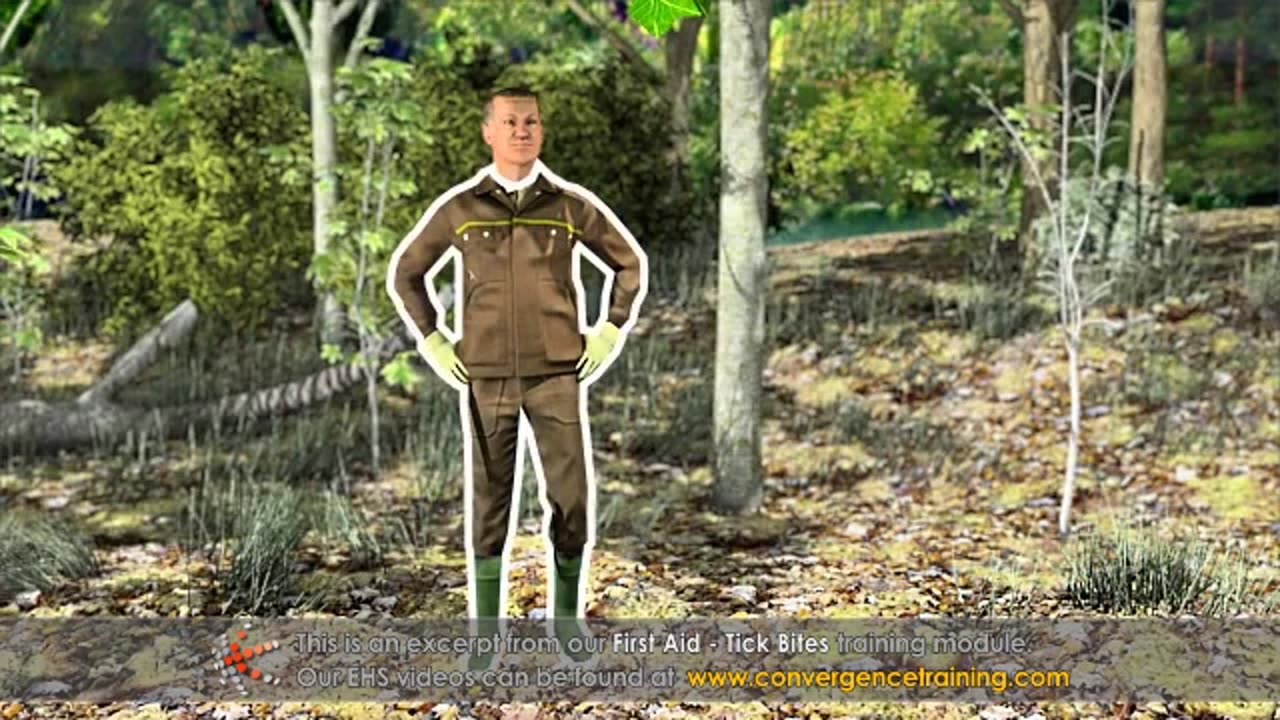Premium Only Content

First Aid - Tick Bites Training
### First Aid for Tick Bites Training
Ticks are small, blood-sucking parasites that can transmit serious diseases such as Lyme disease, Rocky Mountain spotted fever, and others. Proper first aid and prevention are essential for minimizing the risks associated with tick bites. This training guide covers first aid, prevention, and practice scenarios.
---
#### **Understanding Tick Bites**
1. **How Ticks Attach:**
- Ticks latch onto the skin and feed on blood.
- They prefer warm, moist areas such as the scalp, armpits, groin, and behind the knees.
2. **Potential Risks:**
- Local irritation or infection at the bite site.
- Transmission of tick-borne illnesses if the tick is infected.
---
#### **First Aid Steps for Tick Bites**
1. **Remove the Tick Immediately:**
- Use fine-tipped tweezers.
- Grasp the tick as close to the skin as possible.
- Pull upward with steady, even pressure. Avoid twisting or jerking to prevent breaking off the mouthparts.
- If the mouthparts remain embedded, leave them and allow the skin to heal naturally or consult a healthcare provider.
2. **Clean the Bite Area:**
- Wash the bite site and your hands thoroughly with soap and water.
- Disinfect the area with rubbing alcohol or an antiseptic.
3. **Dispose of the Tick:**
- Submerge the tick in alcohol, seal it in a bag or container, or flush it down the toilet.
- Avoid crushing the tick with your fingers.
4. **Monitor for Symptoms:**
- Observe for signs of infection at the bite site (redness, swelling, warmth, or pus).
- Watch for flu-like symptoms, fever, rash, or joint pain over the next several weeks, which could indicate a tick-borne disease.
5. **Seek Medical Attention If:**
- A rash develops, especially a "bullseye" pattern (potential Lyme disease).
- Flu-like symptoms or fever occur.
- The tick was attached for more than 24 hours or its removal was incomplete.
- You’re unsure if the tick was fully removed.
---
#### **Preventive Measures**
- **Clothing and Repellents:**
- Wear long sleeves, pants, and closed-toe shoes in tick-prone areas.
- Tuck pants into socks and shirts into pants.
- Use insect repellents containing DEET or permethrin on clothing and exposed skin.
- **Check for Ticks:**
- Conduct thorough body checks after spending time outdoors, especially in wooded or grassy areas.
- Check pets and outdoor gear for ticks.
- **Maintain Your Environment:**
- Keep grass short and remove leaf litter or debris where ticks might hide.
- Use tick-control products for pets.
---
#### **Training Scenario Practice**
1. **Tick Removal Simulation:**
- Use fake ticks (beads or small objects) and tweezers to practice proper removal techniques on mannequins or volunteers.
2. **Symptom Recognition:**
- Provide case studies with different symptoms and ask participants to determine the appropriate response.
3. **Prevention Activity:**
- Teach participants how to use repellents and dress appropriately for tick-prone environments.
---
#### **Additional Notes for Training**
- Emphasize the importance of timely tick removal, as the risk of disease transmission increases with the duration of tick attachment.
- Discuss common tick-borne diseases in your region and their symptoms.
- Provide participants with a checklist for preventing and addressing tick bites.
Let me know if you'd like a printable version or any additional materials for the training!
-

Geeks + Gamers
2 hours agoDisney RATIO'D on Christmas Day | Mufasa Embarrassed By Sonic 3
13.8K1 -
 LIVE
LIVE
Sm0k3m
6 hours agoPlaying games on Rumble
260 watching -
 10:37
10:37
Russell Brand
2 days agoHow is this even allowed?
113K690 -
 1:37:26
1:37:26
Real Coffee With Scott Adams
2 hours agoEpisode 2701 CWSA 12/26/24
40.2K21 -
 2:58:58
2:58:58
Wendy Bell Radio
7 hours ago9 Steps Ahead
80K105 -
 LIVE
LIVE
LFA TV
16 hours agoTIME FOR A NEW SPEAKER! | LIVE FROM AMERICA 12.26.24 11am EST
5,242 watching -
 1:40:22
1:40:22
Game On!
13 hours ago $4.43 earnedNFL Thursday Night Football Seahawks at Bears EXPERT Picks!
33.3K9 -
 1:50:54
1:50:54
xBuRnTx
2 hours agoWho's Ready for New Years!
16.3K1 -
 12:09
12:09
Tactical Advisor
15 hours agoSmith & Wesson Shield Plus Carry Comp
19.3K1 -
 4:35:25
4:35:25
Father Russell
8 hours agoDelta Force | Not A Woman? | Mad Martigan Time
60.9K5